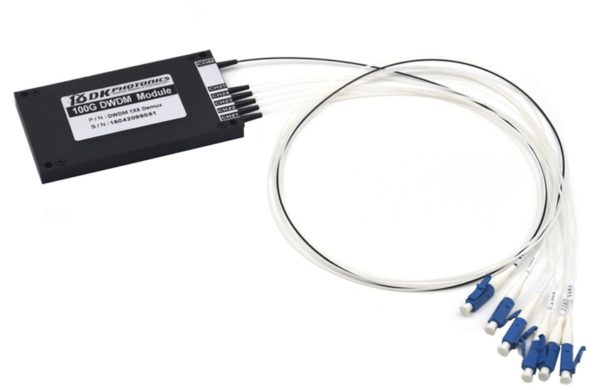WDM is the abbreviation for Wavelength Division Multiplexing, it is a popular technology used in currently fiber optic communication systems. By WDM, we can split a number of optical lights in an optic fiber into a number of discrete wavelengths. Each wavelength can be considered to an independent channel running at a special data rate of 5Gbit/s, 10Gbit/s, 40Gbit/s or even 100Gbit/s. If the light in the fiber is split into 16 channels, and each channel running at 40Gbit/s, the total data transmission rate will be 640Gbit/s. In effect, this means maximized use of a single fiber optic to transmit and receive a large number of signals, minimizing costs for telecom companies. WDM technology is also the working principle of optical amplifiers, multiplexers, and demultiplexers. Next, I will give a separate introduction about WDM/CWDM/DWDM technologies.

DWDM and Conventional WDM
DWDM stands for Dense Wavelength Division Multiplexing. It means the divided wavelength channels are very narrow and close to each other. It is widely used for the 1550nm band so as to leverage the capabilities of EDFA (Erbium Doped Fiber Amplifiers), which are effective for wavelengths between approximately 1525-1565 nm (C band), or 1570-1610 nm (L band). Conventional WDM Conventional WDM uses the 3rd transmission window with a wavelength of 1550nm, accommodating up to 8 channels. DWDM basically is the same however along with the higher density channel. An ultra-dense WDM is capable enough to work at the spacing of just 12.5 GHz, allowing some more channels.
CWDM
CWDM refer to Course wavelength division multiplexing, in CWDM technology, it shared the fact that the choice of channel spacing and frequency stability which is the EDFA could not use. There is an increase in channel space; it cannot be used in EDFA. One basic meaning for the CWDM is two (or more) signals are multiplexed onto the single fiber, where one signal was into the 1550 nm band, and then another one into the 1310 nm band. Currently, there is an increase in the channel space. This means the need for less sophisticated and less costly transceivers devices. Working into the similar window of 1550 nm as well as making the utilization of OH-free silica fibers, the maximum efficiencies are gained into the channels 31, 49, 51, 53, 55, 57, 59 and 61 utilizing the wavelengths from 1270 nm through 1610 nm along with the channel spacing of 20 nm. CWDM devices are commonly used in fewer precision optics and lower cost, un-cooled lasers with lower maintenance requirements? Compared with DWDM and Conventional WDM, CWDM is much more cost-effective and less power consumption of laser devices.
Currently, kinds of related CWDM MUX/DEMUX or DWDM MUX/DEMUX or optical amplifiers are available in the market. Networking solutions provider is the right ones to ask for guidance for use of CWDM, DWDM or WDM technology. Choosing the right one means the correct, integrated devices for error-free high-speed data transmission over fiber optic networks. Cost-effective CWDM solutions with optimized performance and built-in expansion capabilities are available from a host of online network solution companies. Choosing the most experienced one to get the reliable CWDM solution is critical.